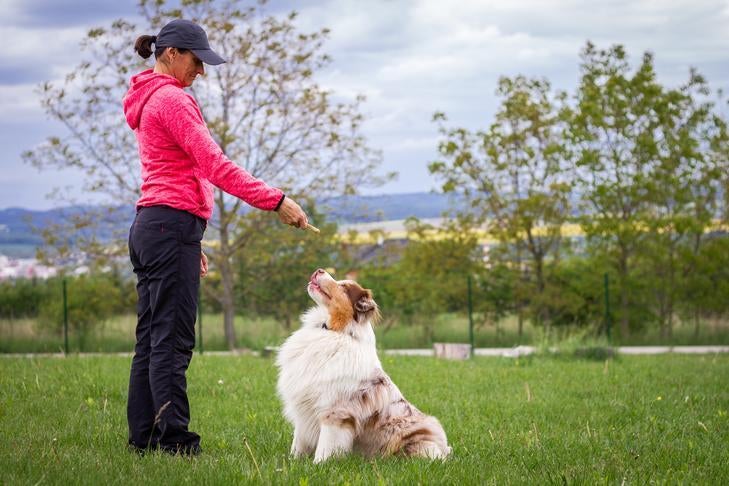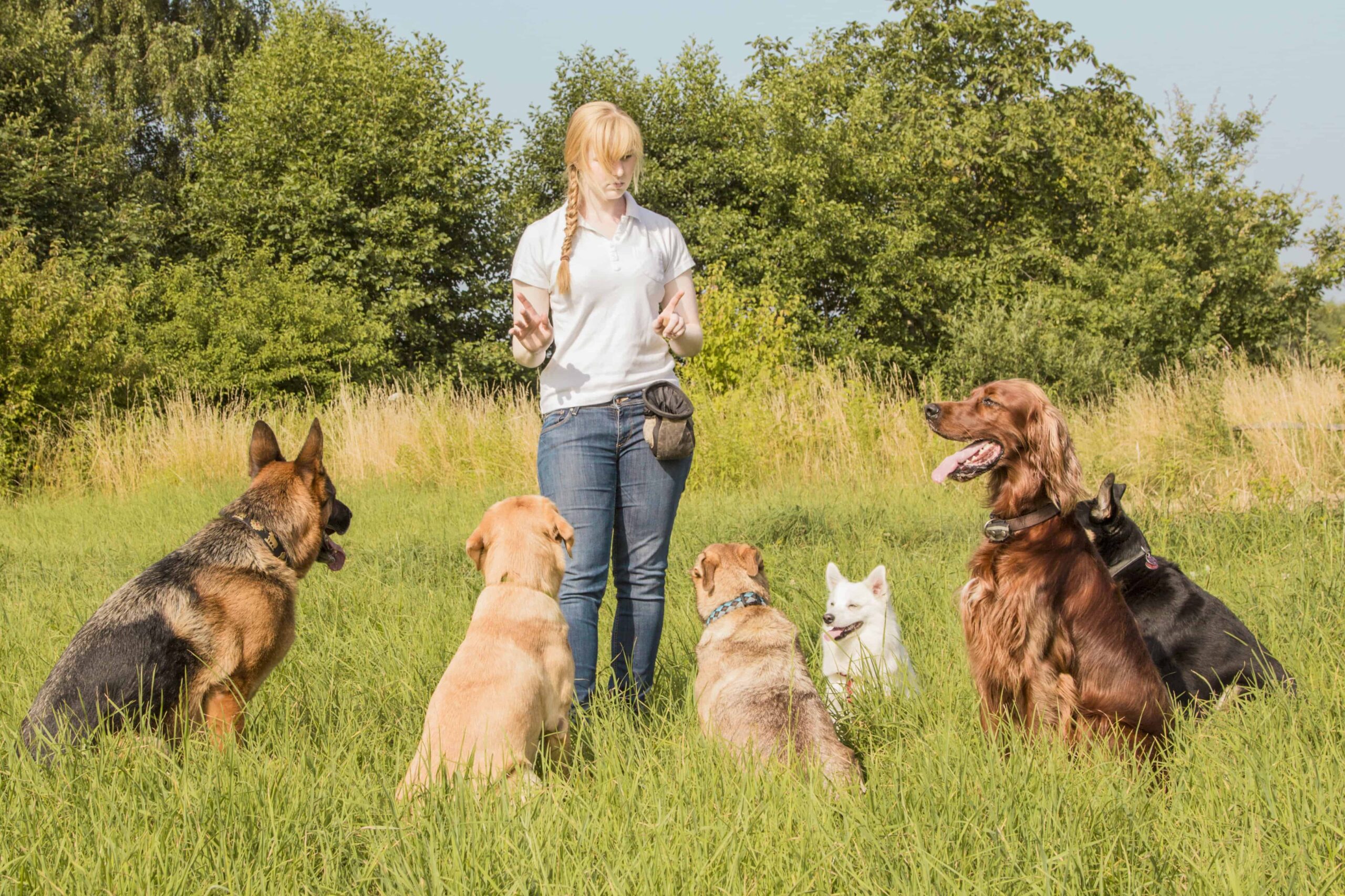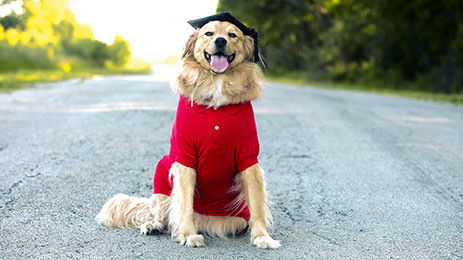Discover the Top Mistakes to Stay Clear Of in Dog Training
Vital Tips for Effective Dog Training: A Guide for Pet Owners
Effective pet dog training is a complex process that calls for a critical method tailored to both the animal's personality and the proprietor's objectives. Recognizing how to navigate these barriers can considerably enhance the training experience, eventually changing the partnership in between owner and dog.
Recognizing Canine Behavior
Comprehending pet dog behavior is important for efficient training and cultivating a harmonious partnership in between pooches and their proprietors. Dogs communicate mostly via body movement, vocalizations, and activities, making it crucial for owners to analyze these signals precisely. Recognizing a dog's stance, tail position, and ear orientation can give insights into its mood. A wagging tail does not always suggest happiness; it can additionally signal exhilaration or anxiety.

Socialization plays a substantial function in dog habits; direct exposure to numerous atmospheres, people, and various other animals can considerably influence a dog's personality. Moreover, elements such as type qualities and individual character ought to direct training approaches, as some types might have particular behavior characteristics that demand tailored strategies. By recognizing these elements, proprietors can develop a supportive environment that motivates positive actions, resulting in effective training results and a deeper bond with their family pets.
Developing Consistent Commands
Reliable interaction with your pet starts with establishing constant commands. This fundamental element of training is crucial for fostering understanding between you and your pet. Uniformity in the commands you use makes certain that your canine can dependably connect specific words or expressions with the desired habits.
When choosing commands, choose clear, distinct words that are easy to differentiate and state from each other. Stay clear of utilizing similar-sounding commands that may confuse your pet dog. As an example, using "sit" and "remain" is ideal, but "sit" and "struck" can bring about misunderstandings.
Furthermore, maintain the same tone and volume for each command. Canines are sensitive to vocal signs, so varying your tone can create confusion.
It is equally essential to guarantee that all relative are on the very same web page regarding the commands used. A united front in command usage will certainly protect against mixed signals and strengthen the understanding process.
Favorable Support Methods
The power of favorable support in dog training hinges on its capacity to urge wanted actions with benefits and appreciation. This strategy is based in the principle that habits complied with by beneficial results are more probable to be repeated. By incorporating positive support into your training regimen, you can properly shape your pet dog's behavior in a positive manner.
To execute favorable reinforcement, it's important to identify what motivates your dog, whether it be deals with, playthings, or spoken appreciation. When your pet dog executes a preferred activity, such as resting on command, instantly compensate them with a reward or love. This organization in between the command and the positive outcome enhances their understanding.
It's crucial to timing the rewards correctly; providing the reinforcement within seconds of the wanted behavior assists your pet make the link (dog training). In addition, consistency is essential-- make certain that all family participants use the exact same commands and benefit systems to avoid complication

Slowly, you can decrease the regularity of deals with as your pet dog discovers the habits, transitioning to commend or periodic benefits. This technique not only promotes a strong bond in between you and your dog but additionally advertises a positive understanding environment, making educating a delightful experience for both.
Socialization and Communication
Constantly revealing your pet dog to a variety of settings, people, and other animals is essential for their social advancement. Socializing should start early, ideally throughout the vital home window of 3 to 14 weeks, when pups are most receptive to new experiences. However, older dogs can also benefit from ongoing socialization efforts.
Introduce your pet to various setups, such as parks, pet-friendly stores, and urban areas. This direct exposure he said aids them adapt to various stimuli, minimizing anxiety and fear reactions. Encourage favorable interactions with other pets and people, making certain that these encounters are secure and regulated to cultivate self-confidence.
Make use of organized playdates with genteel pets, as this can boost your pet's social skills and educate them proper habits. Obedience courses and training sessions additionally supply outstanding chances for socialization, permitting your pet dog to interact with others in a monitored setting.
Screen your pet dog's body language throughout interactions, as this will assist you determine their convenience level. Progressively increase direct exposure to even more difficult scenarios while making certain that each experience declares. A well-socialized canine is most likely to show well balanced behavior, making them a delight to have in any type of setting.
Addressing Usual Training Obstacles
Every dog proprietor will run into training difficulties at some time, no matter their pet dog's age or socializing degree. Recognizing common concerns such as stubbornness, diversions, and fearfulness can assist in creating reliable techniques for renovation.

Distractions throughout training sessions can derail emphasis. To fight this, start training in a silent setting with minimal stimulations. Slowly introduce diversions as the dog ends up being much more skillful in commands. Short, constant training sessions are additionally efficient in keeping attention.
Fearfulness can prevent a canine's discovering process. Steady desensitization to the resource of anxiety, combined with positive reinforcement, can aid relieve anxiousness. Perseverance is important; never ever require a canine right into a situation that triggers distress, as this may intensify the problem.
Ultimately, understanding and dealing with these typical obstacles with an organized technique will certainly foster a more click for more productive training experience, strengthening the bond in between canine and proprietor while promoting effective learning.
Verdict
In recap, effective pet training counts on a detailed understanding of canine actions, the facility of consistent commands, and the application of favorable reinforcement techniques. Socialization plays a crucial duty in creating well-adjusted pet dogs, while dealing with common training obstacles requires perseverance and flexibility. By applying these crucial methods, family pet proprietors can foster a strong bond with their dogs and promote desirable behaviors, eventually leading to a harmonious relationship between humans and their canine buddies.
Recognizing canine habits is necessary for efficient training and fostering a harmonious partnership in between dogs and their proprietors.Socialization plays a substantial duty in pet dog actions; exposure to various environments, people, and other animals can considerably impact a pet's temperament.The power of positive reinforcement in dog training exists in its capacity to motivate wanted behaviors through incentives and appreciation. By integrating positive reinforcement into your training program, you can properly form your dog's actions in a constructive manner.
In summary, successful pet training relies on a thorough understanding of canine actions, the establishment of consistent commands, and the application of you can check here positive support techniques.